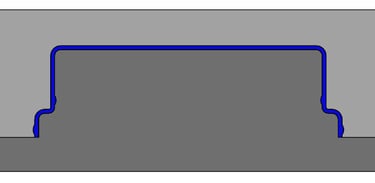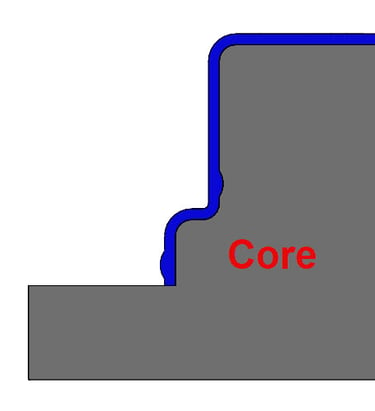Undercuts in Plastic, Part 4 of 3.
Hitchhikers guide to undercuts. Undercuts need to go somewhere.
ENGINEERING AND DESIGN STUFFPLASTIC PART DESIGN
Bert
11/7/20232 min read


Fans of “The Hitchhiker’s Guide to the Galaxy” know that the trilogy ended up with 6 parts. If you count parts 3a and 3b, this trilogy is up to 5. I have no more planned but I reserve the right to change my mind.
If you have read other posts in this series, you know that not all undercuts are that bad. Many of them can be jumped, some are even necessary, and some have useful benefits. There is one type of undercut that is more serious than most and should be avoided, or at least can't be jumped like you might at first think. Exceptions given later.
What makes an undercut not very concerning for jumping is if it is not very big and has shallow leadin angles. One other important detail needs to be remembered: It has to be in the core steel, not the cavity steel. That makes a big difference because the cavity steel moves first. When it is on the cavity steel, the part is still on the core and there is nowhere for the plastic to deflect into. When the undercut is on the core steel, the cavity is not there so when the undercut is jumped, there is space for it to deflect into.
Below are images of a simple part in a mold and some detail views. Notice in the first detail that when the cavity is still in place, the core is reinforcing the part such that it cannot deflect. Contrast that to the second detail where the cavity is out of the way and the part can deflect into empty space. In this part, the inner undercut should not be a problem but the outer one is.




If you need to have undercuts on both core and cavity sides, a common solution is splitting the cavity so that the undercuts are no longer undercuts. These issues turn out to be moot if your material is soft. I have designed numerous rubber parts that have major undercuts and it Is not a problem, but even then there are limits to how much the part can stretch and avoid tearing. Consult with your molder. I recently came across a part with undercuts in both core and cavity. The material was polyethylene, which is pretty soft, and the undercuts were not aggressive, so that they could be jumped without problems. I was actually surprised to see the undercuts on both sides but this old dog can still learn new tricks.
I hope this series of posts on undercuts have been helpful. Comments are welcome as are suggestions for other topics to explain.



